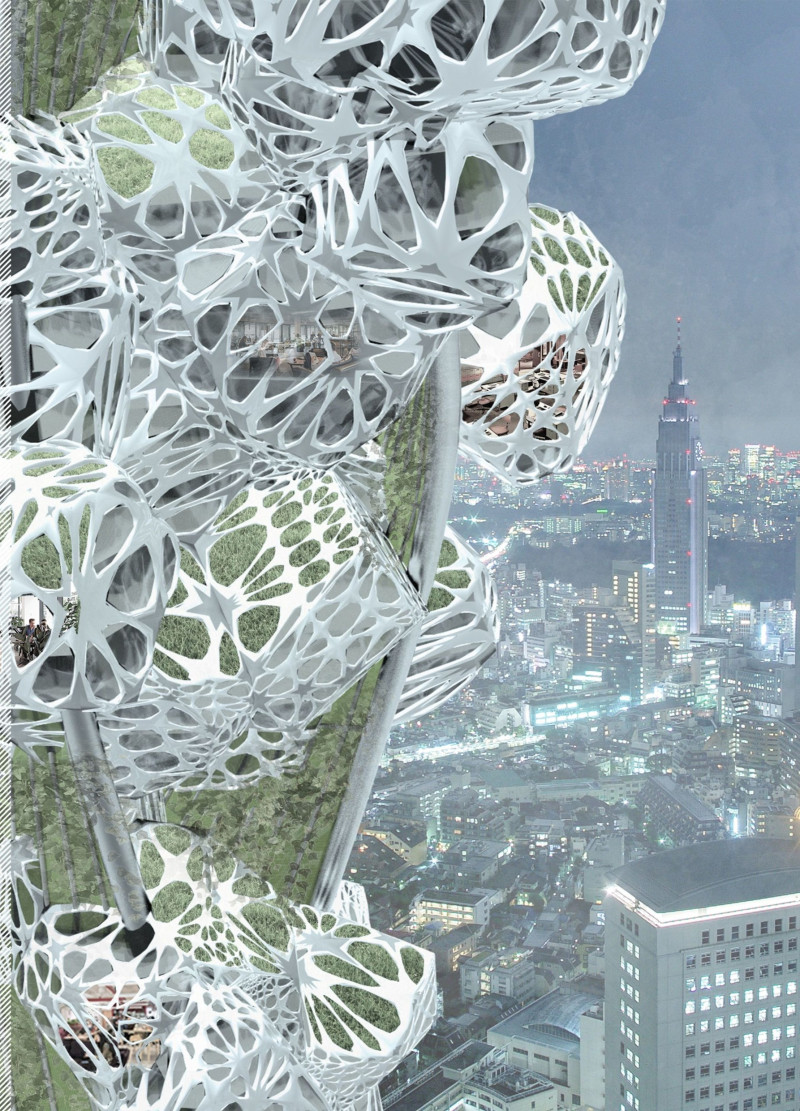5 key facts about this project
Architecturally, the project is characterized by its commitment to a minimalist yet welcoming approach. The design prioritizes open spaces and natural light, utilizing large windows and strategically placed skylights to enhance the interior ambiance. This approach reflects a contemporary way of living that values both connection to the outdoors and a sense of spaciousness within urban environments. The integration of indoor and outdoor elements not only maximizes the usability of the area but also encourages an interaction with the surrounding landscape, forming a dialogue between the building and its environment.
The materials used in this project have been carefully selected to align with both environmental considerations and the aesthetic priorities of the design. Predominantly, the structure incorporates reinforced concrete for its durability and stability, while warm wooden finishes are employed to soften the overall appearance and add a touch of natural warmth to the interiors. Glass is abundantly utilized, allowing for transparency that blurs the boundaries between inside and outside. Furthermore, the project features elements such as sustainable cladding materials, natural stone, and metal accents, each chosen not only for their visual appeal but also for their characteristics in promoting energy efficiency and longevity.
Functionally, the project addresses diverse needs and activities of contemporary life, offering a mix of private and communal spaces. The floor plan is an open concept, combining living, dining, and kitchen areas that facilitate social interaction while providing essential privacy through strategically placed partition elements. Importantly, areas designated for work and leisure have been thoughtfully integrated, reflecting a modern lifestyle where flexibility and adaptability are paramount. The design showcases how spatial organization can enhance productivity and comfort, catering to the evolving ways in which spaces are utilized.
Unique design approaches are evident in several aspects of the project, particularly in the way landscaping has been woven into the architectural fabric. The integration of green roofs and vertical gardens not only enhances the aesthetic value but also plays a crucial role in stormwater management and thermal regulation. This ecological aspect demonstrates a growing awareness in architecture regarding the importance of sustainability and environmental responsibility. The project also capitalizes on passive heating and cooling strategies, reducing reliance on mechanical systems and emphasizing an environmentally-conscious approach to temperature regulation.
In summary, this architectural project is a reflection of contemporary design principles that prioritize sustainability, functionality, and aesthetic clarity. Its emphasis on open spaces, thoughtful material choices, and ecological integration positions it as a noteworthy example of modern architecture. For those interested in gaining a deeper understanding of the ingenious architectural plans, sections, and designs that underpin this project, further exploration of the presentation is encouraged. Engaging with the specific architectural ideas and visual representations will undoubtedly provide valuable insights into the careful planning and consideration that characterize this innovative endeavor.


























